Why do cucumber leaves turn yellow and dry and what to do?
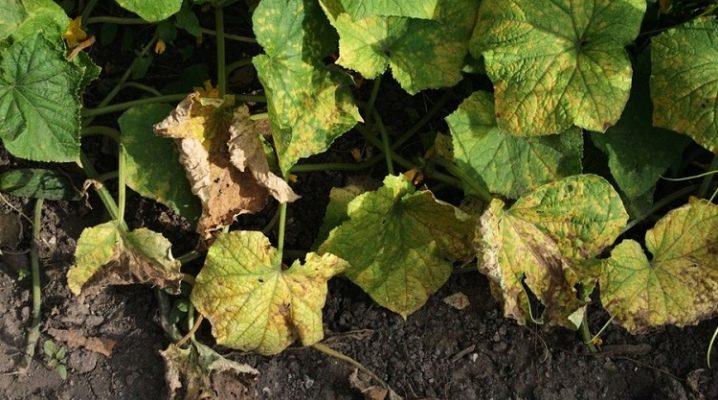
Getting a good harvest of cucumbers is not difficult, the main thing is to keep the bush green as long as possible. But often, even if all agrotechnical rules are followed, the leaves of cucumbers begin to turn yellow, curl and dry. In this case, it is clear that you can only dream of a harvest.
At the first changes in the color of cucumber leaves, the gardener needs to react. In the article, we will tell you about the causes of the appearance of yellowness, what to do to eliminate it and how to proceed so that the bushes remain healthy and are not affected by pests and fungal diseases.
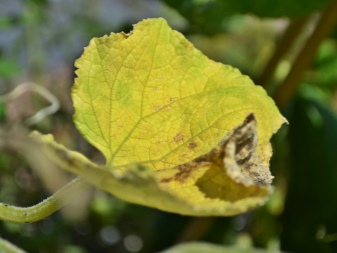

Possible reasons
In short, cucumber leaves turn yellow and dry for the following reasons:
- due to lack of light;
- due to burns from the strong sun;
- improper watering;
- due to the difference in temperature conditions;
- with a deficiency of nutrients;
- tops are affected by pests;
- Zelentsy caught a fungus or they were struck by viral diseases.
The lesions are distinguished by their location, have a clear outline of yellowed places. If the process has already begun and cannot be stopped, the shade of the leaves will change quickly and eventually the bush will dry out. Yellowness can appear both on the first small leaves of seedlings, and on an already adult plant. Depending on the cause, the response measures will be different, so let's take a closer look at each cause separately.
Cucumbers can experience a lack of lighting at different stages of their development and growth, but especially light is needed for small leaves that are just peeking out of the ground, and the lower tops during fruiting.
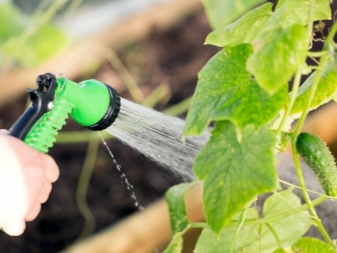
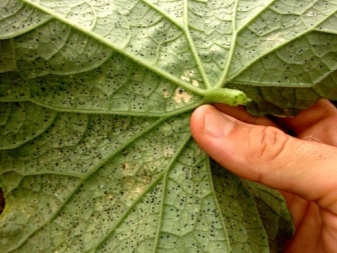
In the first case, the problem is solved quickly by rearranging the seedlings to another place where there is more light or illuminating the seedlings with a phytolamp. The photosynthesis process is restored and the plants take on a bright green hue again. But if the lower leaves of adult bushes dry (it is believed that this is inevitable due to the large mass of greenery), then they are immediately removed and the bush is thinned out, cutting off those wattle fences on which flowers for fruiting are not visible. Thus, the growing season is prolonged.
Sunburn, respectively, and yellowing occurs when watering in extreme heat. And although such yellowness does not harm the cucumbers in general, it is better not to allow this. Water the crop in the early morning or late afternoon when the sun is less hot. It is worth noting that a lack of moisture will adversely affect cucumbers, as well as other crops from the pumpkin family. Often, cucumber bushes turn yellow precisely because of a lack of moisture or drought. The tips of the leaves begin to dry, then the whole leaf and bush.
Therefore, you need to water cucumbers often, but not with the scorching sun and in moderation, overflow is also dangerous. The leaves of cucumbers can also turn yellow from stressful situations, for example, from a sharp drop in day and night temperatures. You can protect seedlings from hypothermia by covering them with non-woven fabric or agrofiber. If you do not take any measures, the culture will not be able to receive normal nutrition and this will affect the growing season.
As soon as the temperature regime stabilizes (naturally or artificially), the plant will return to normal and the yellowness will pass.

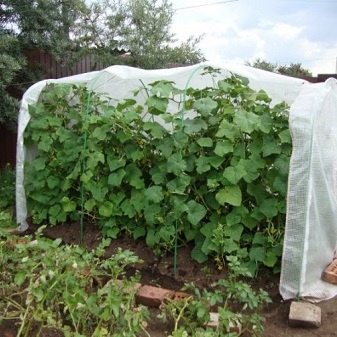
How to save cucumbers in case of nutritional deficiencies?
Cucumber foliage will turn yellow both with a shortage of the entire complex of useful elements, and with a deficiency of individual nutrients.In any case, it is necessary to immediately take measures and feed the plants in order to preserve the cucumbers.
To understand what the culture lacks, study the features of the yellowness that has appeared and pay attention to the symptoms.
- With a lack of nitrogen, not only the leaves turn yellow, the plant slows down its development, grows poorly (this element is especially important during growth), does not give new shoots, and the existing ovary disappears... In this case, it is necessary to add nitrogen-containing fertilizers in the form of top dressing (both mineral and organic are suitable). So, do foliar treatment with urea. You only need 1 g for every liter of water. Cucumbers are sprayed with this solution once, after 10 days one more time. Chicken droppings make up for the nitrogen deficiency well - this method will be more to the liking of fans of organic growing of vegetables. One glass of droppings is diluted in 10 liters of water and the composition is left to ferment for several days. The resulting concentrate is diluted (in a large glass per bucket) and poured under each bush (it is undesirable to hit the plant).
- When cucumbers lack potassium, the edges of the leaves are covered with a yellow border, which becomes brown over time.... At the same time, the ovary does not appear and the lashes are pulled out - these are also signs of potassium deficiency. This trace element is needed by the plant for the normal assimilation of other nutrients. Without potassium, the rest of the elements will not be useful to cucumbers, so at the first signs of a lack of potassium, this problem needs to be solved. Ash is a suitable option for replenishing the potassium deficiency: it can be buried under a bush for 2-3 teaspoons, then spill this place, or you can immediately prepare a liquid ash solution. Usually they make it on a bucket of water, taking one glass of ash powder, mix everything well and watered at the rate of half a liter of ash solution for each bush. Potassium magnesium is also used - this fertilizer (20 g per bucket of water) is better to dilute and water the bushes, you can also spray the affected plants.
- If the leaves begin to turn white and then curl, this indicates a calcium deficiency.... This can often be seen when growing cucumbers in acidic soils. If you do not take action, foliage will fall off: ideally, it is better to measure the acidity level and bring the pH value back to normal. The situation can be corrected by treatment with calcium sulfate. Experienced gardeners collect eggshells during the winter, dry them, grind them and also use them in this case as a natural fertilizer, adding plants. It contains a lot of easily digestible calcium, 1 teaspoon of this powder is enough for one bush.
- If the cucumber leaves turn yellow, but the veins remain green, this indicates that the plant needs iron.... In specialized stores, they will offer ready-made preparations for replenishing the stock of this element and will give instructions on how to use them. You can prepare an appropriate solution for watering or spraying at home, taking 10 g of ferrous sulfate, 20 g of ascorbic acid and dissolve all this in one liter of water.
- With a lack of magnesium, the leaves will begin to turn yellow, then turn red, while the veins, as with iron deficiency, may remain green... In this case, magnesium sulfate is useful: the granules of this fertilizer (20 g per 10 l) are dissolved in water and sprayed. It is better to do this after the color has appeared on the cucumbers.
One treatment will not be enough, you will have to repeat the procedure at least 2 more times with an interval of 10 days.
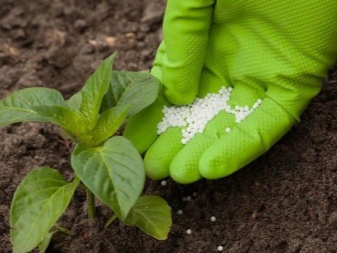

Treatment of diseases
Yellowness on cucumber branches can also indicate that the plants are sick with fungal diseases. Cucumbers are ill with fusarium, anthracnose, and a fungus called downy mildew also affects them. We will tell you in more detail what to do, how to process the bushes in these cases.
- Fusarium... With such an infection, yellowness appears on the leaves, then the stems become thinner and the plant itself withers.You can save cucumbers only with industrial preparations, folk remedies will not help in this case. So, you need to buy, for example, "Trichodermin" or "Fundazol" and if fusarium is detected, spray the cucumber plantation or shed soil around the bushes.
- Powdery mildew... When yellow spots appear on the leaf plate, and a white bloom is found on the other side of the leaf, this is a lesion with downy mildew (steam spores). You can also destroy this problem using the folk method by preparing a solution of soda (25 g) and laundry soap (5 g) - the components need to be stirred in 5 liters of hot water, and when the composition cools down, spray the bushes and shed soil near them. If you have such fungicides as "Acrobat" and other similar preparations at hand, then you can use "chemistry".
- Anthracnose... If the leaves began to turn yellow and immediately dry up, you are dealing with anthracnose. With such a lesion, spots with a diameter of 3-5 cm may appear, which acquire a brown tint. The leaf simply breaks in the affected area and dries up if you do not take measures to treat the plant. Here you can’t do without fungicides, “Quadris”, “Poliram” and other compounds will help.
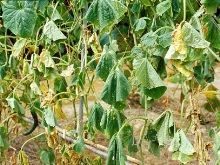
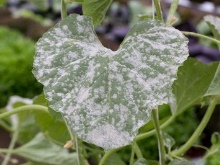

Pest control
Cucumbers can also be attacked by pests such as mealy worms and spider mites. Often on the cucumber plantation you can find invasion of aphids and whiteflies... The attack of these pests also leads to the appearance of yellowness on the leaves.
If these pests are detected in a timely manner and the necessary processing is carried out, then serious consequences can be avoided. Choose effective formulations and the parasites will quickly retreat. To eradicate aphids and whiteflies, you will need broad-spectrum insecticides such as "Envidor", "Confidor" and others, and to destroy spider mites and mealy worms, you will have to stock up on drugs from the group "acaricides".
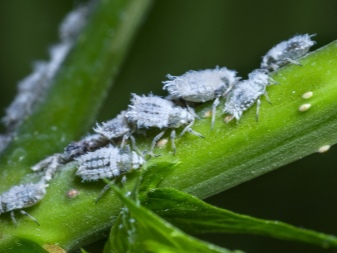
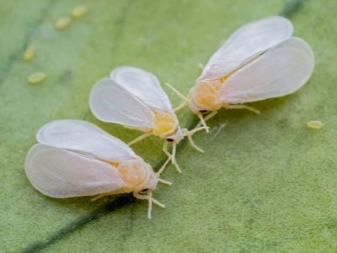
Prevention measures
Everyone knows that it is better to prevent diseases with preventive measures than to get rid of them later. This can also be attributed to garden plants. Consider the activities that need to be carried out in the greenhouse, in the open field, on the balcony in order to save the cucumbers.
In the greenhouse
In a greenhouse or in a greenhouse under a film, cucumbers develop quickly due to the fact that a stable regime is provided to the plants there. But with the slightest failure, the situation can very quickly get out of control. To maintain stability in a sheltered environment and not expose the cucumber crop to stress or disease, follow the rules.
- Water cucumbers no more than once every three days at the rate of 10 liters per 1 square meter plot.
- Maintain the same temperature inside according to the weather outside: up to + 24 degrees in the daytime and up to +18 - at night. During fruiting, the temperature is increased by several degrees.
- Do not forget about airing greenhouses and greenhouse structures... High humidity and lack of oxygen is a good environment for the development of fungal diseases, so do not settle in the tropics.
- Well, you need to make a pick in a timely manner if the seeds were planted too close to each other... There is no need to be afraid to get rid of weaker lashes, otherwise the tightness will lead to the fact that all plants will develop poorly.
A greenhouse or greenhouse is built in such a way as to ensure normal air exchange for plants - high humidity is attractive for fungus and other diseases.
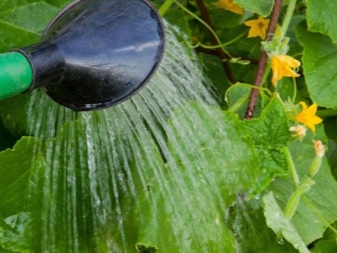

In the open field
But to keep the cucumbers green in the garden, follow these rules:
- protect from the cold, covering them with a film or creating other protection, the main thing is to prevent hypothermia of the sprouts;
- don't forget about watering, but also do not overdo it with moisture, the foliage of a cucumber culture can turn yellow from both drought and an excess of water, while it is easier to fix the situation in the first case, since in the second the decay of the bush is already beginning, and if you do not have time to loosen and pour under it ash or sand, it is easy to lose the plant;
- do not allow the "starvation" of cucumbers and feed them in a timely manner: due to a lack of nutrients, foliage will give yellowness;
- do not touch plants in extreme heat (do not water, do not feed, and so on).
Well, no one canceled preventive measures against pests and diseases: first of all, inspect the bushes more often and suppress any "infection" in the bud.

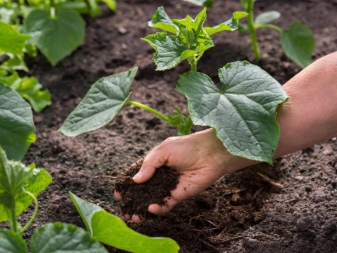
On the balcony
The reasons for the discoloration of the leaves in balcony cucumbers or plants that grow on the windowsill are the same as in the open field and in the greenhouse (improper watering, lack of nutrients, high humidity), but there may be another good reason. If yellowness has gone, this may mean that the seedlings are just cramped, they are planted in too small pots or containers... If we are not talking about adult plants that are already bearing fruit, then the seedlings can be transplanted.
And if it came to fruiting, and the foliage began to turn yellow, it is quite possible that this is a natural yellowness that is characteristic of cucumbers at the end of their development... If you plant only seedlings on the balcony, then do not feed it with organic matter before planting it in an open space.
After the appearance of 2 leaves, you can fertilize with a nitrogen composition, so as not to cause a lack of this element during the period of formation.
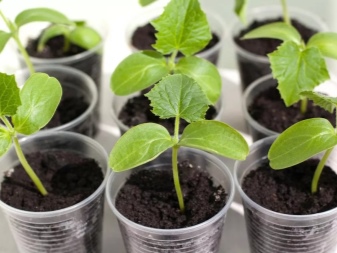
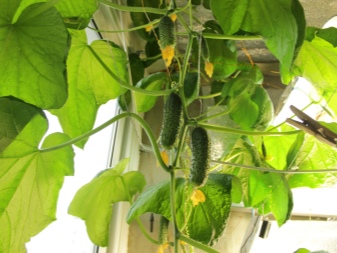













The comment was sent successfully.